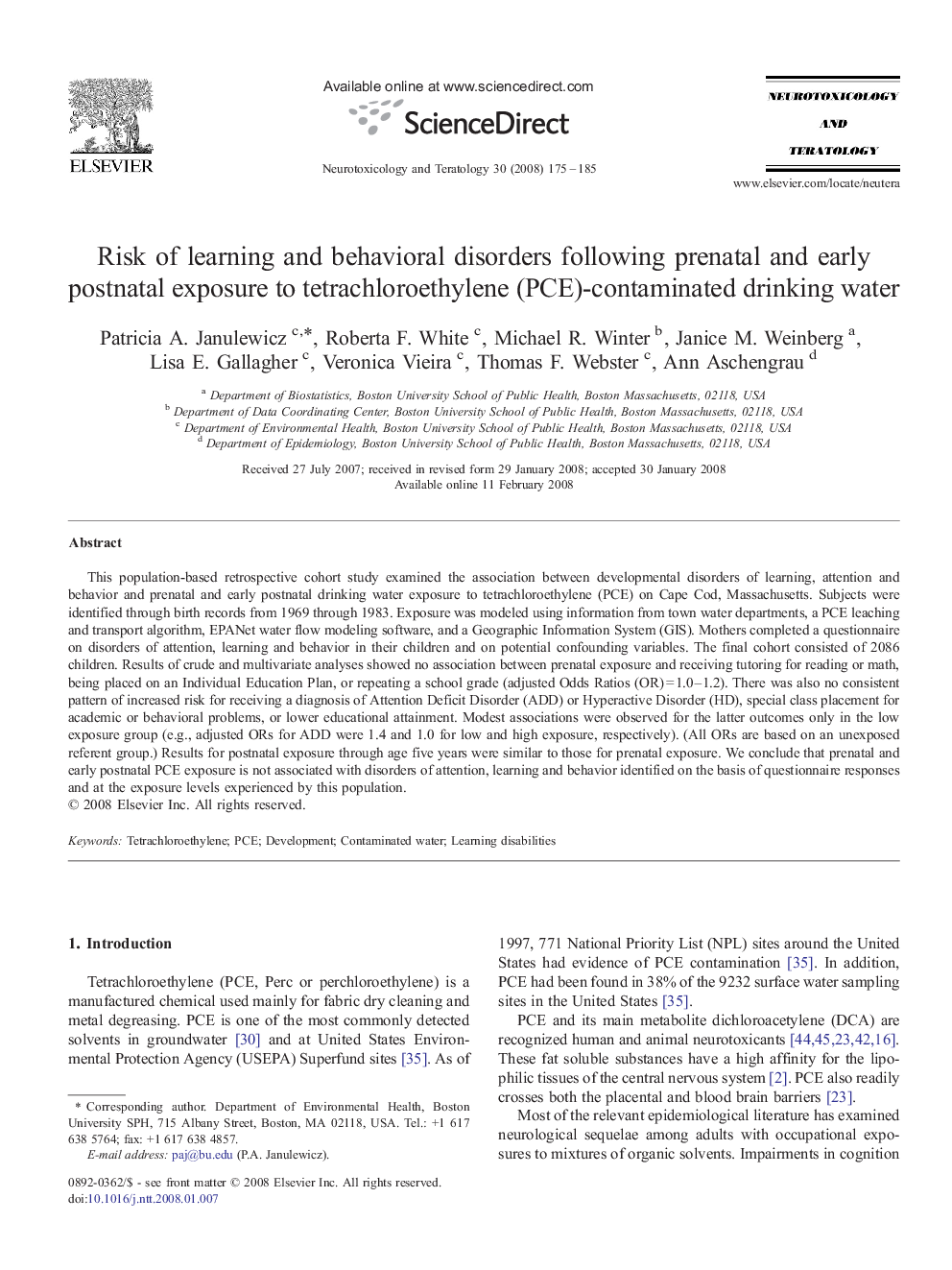| Article ID | Journal | Published Year | Pages | File Type |
|---|---|---|---|---|
| 2592073 | Neurotoxicology and Teratology | 2008 | 11 Pages |
This population-based retrospective cohort study examined the association between developmental disorders of learning, attention and behavior and prenatal and early postnatal drinking water exposure to tetrachloroethylene (PCE) on Cape Cod, Massachusetts. Subjects were identified through birth records from 1969 through 1983. Exposure was modeled using information from town water departments, a PCE leaching and transport algorithm, EPANet water flow modeling software, and a Geographic Information System (GIS). Mothers completed a questionnaire on disorders of attention, learning and behavior in their children and on potential confounding variables. The final cohort consisted of 2086 children. Results of crude and multivariate analyses showed no association between prenatal exposure and receiving tutoring for reading or math, being placed on an Individual Education Plan, or repeating a school grade (adjusted Odds Ratios (OR) = 1.0–1.2). There was also no consistent pattern of increased risk for receiving a diagnosis of Attention Deficit Disorder (ADD) or Hyperactive Disorder (HD), special class placement for academic or behavioral problems, or lower educational attainment. Modest associations were observed for the latter outcomes only in the low exposure group (e.g., adjusted ORs for ADD were 1.4 and 1.0 for low and high exposure, respectively). (All ORs are based on an unexposed referent group.) Results for postnatal exposure through age five years were similar to those for prenatal exposure. We conclude that prenatal and early postnatal PCE exposure is not associated with disorders of attention, learning and behavior identified on the basis of questionnaire responses and at the exposure levels experienced by this population.
